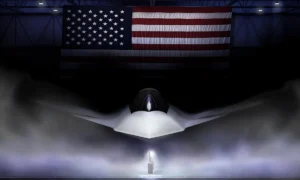At first glance, the P-47 Thunderbolt and the F-47 Fighter Jet may seem identical. And in many ways, they are—built on the same iconic frame, powered by the same roaring radial engine. But history tells a deeper story. The shift from “P” to “F” marked more than a change in letter—it symbolized the evolution of military aviation doctrine, the rise of jet technology, and the changing role of propeller-driven aircraft in a new era of warfare.
Why the Change from P-47 to F-47?
From “Pursuit” to “Fighter”
In 1947, the U.S. Army Air Forces officially became the U.S. Air Force, triggering a widespread overhaul of aircraft designations. “P” for Pursuit was replaced by “F” for Fighter.
- P-47 Thunderbolt → used throughout WWII
- F-47 Thunderbolt → new designation post-1948 under USAF
“The change wasn’t cosmetic—it reflected a shift in strategy and status as the Air Force stood on its own.”
— USAF Historical Division (Source: USAF Designation Archives, 1947)
Structural and Tactical Differences
While airframes remained mostly unchanged, upgrades were made during the transition:
| Component | P-47 Thunderbolt | F-47 Thunderbolt |
|---|---|---|
| Engine | R-2800-59 Double Wasp | Same engine, better tuning |
| Avionics | WWII standard radios | Upgraded communication systems |
| Mission Use | Escort & fighter-bomber | Primarily ground attack & CAS |
| User Branch | U.S. Army Air Forces | U.S. Air Force & Air National Guard |
Role in Combat: WWII vs Korean War
P-47 Thunderbolt in WWII
- Escort missions for B-17 bombers
- Dogfights with German fighters
- Ground attack during D-Day and the Battle of the Bulge
F-47 in the Korean War
- No longer front-line in air-to-air combat
- Used by Air National Guard units
- Focused on close air support, tank busting, and interdiction missions
“The F-47 was a gift for ground troops. While jets zipped overhead, the F-47 stayed low and did the dirty work.”
— Korean War historian Frank Simmons (Source: Wings Over Korea, 1998)
International Service
After WWII, both P-47 and F-47 variants were exported to multiple countries, with updated versions continuing service into the 1950s:
- Brazil: Operated over 80 F-47s
- France: Used them during colonial conflicts in Indochina
- Mexico: Retained them for national defense into the 1950s
Final Verdict: Two Names, One Legacy
The F-47 wasn’t a redesign—it was a reaffirmation. A testament to the P-47’s enduring effectiveness, the F-47 served as a bridge between prop-driven warfare and the jet age. While its role shifted from dogfighter to bomber escort and ground support hero, the aircraft’s legacy remained rock solid.
“Call it a P-47 or an F-47—it’s the same beast. Just with more battles under its belt.”
— Ret. Maj. Carl Delaney, USAF (Source: Veteran Pilot Diaries, 1995)
FAQs
Q1. Why was the P-47 renamed to F-47?
In 1948, the U.S. Air Force changed all “Pursuit” (P) aircraft designations to “Fighter” (F), making the P-47 the F-47.
Q2. Did the F-47 have improved performance?
Minor upgrades were made to avionics and systems, but the airframe and engine remained largely unchanged.
Q3. Was the F-47 used in the Korean War?
Yes, primarily by Air National Guard units for ground support missions early in the war.
Q4. Are there any F-47s still flying today?
Yes, several restored F-47s fly in airshows worldwide.
Q5. Which countries used the F-47 after WWII?
Brazil, France, Mexico, and others operated the F-47 during the postwar years.
